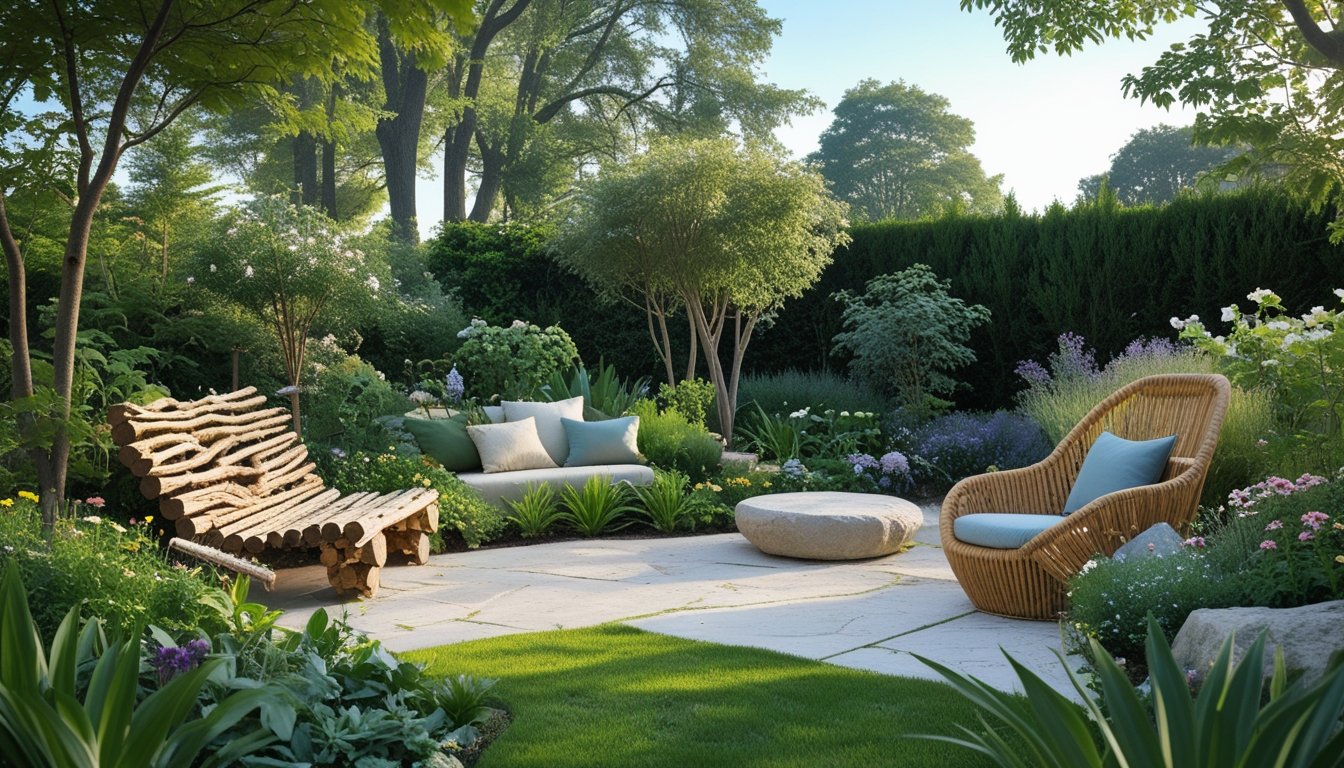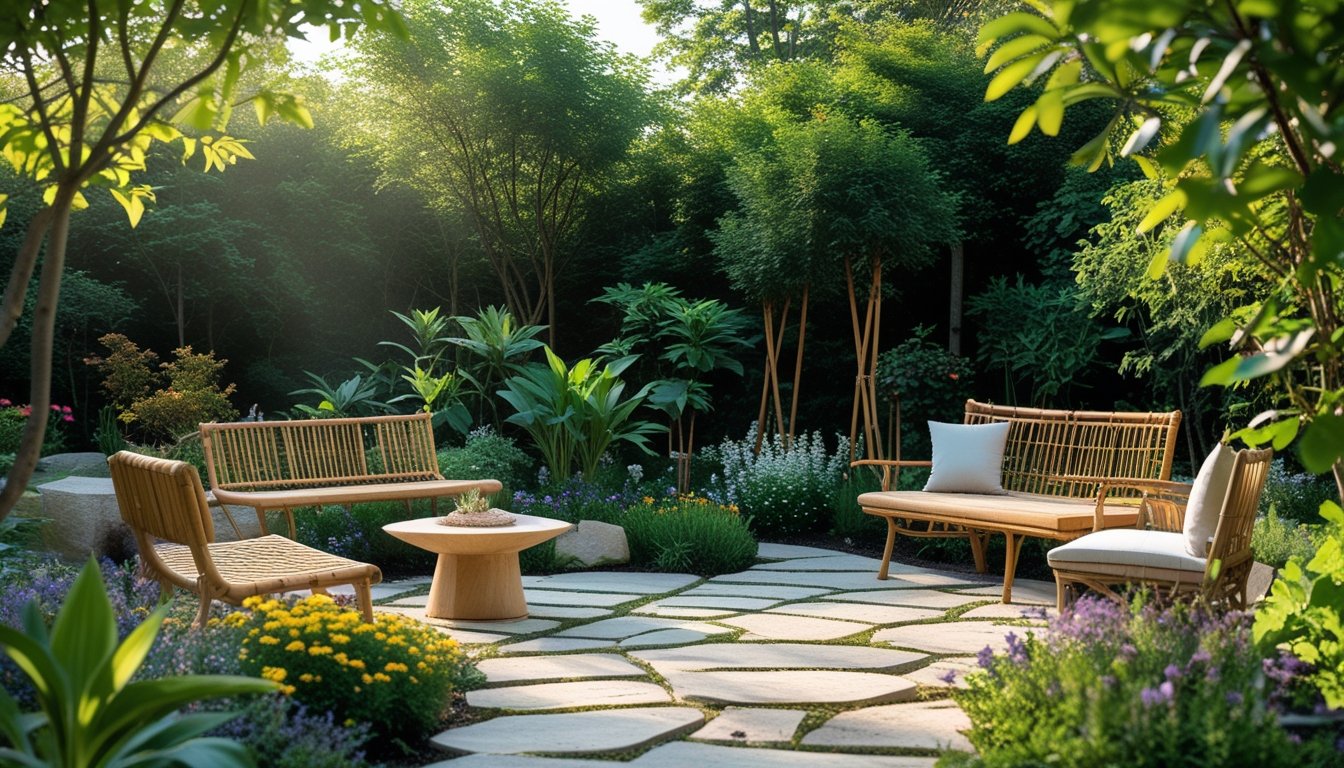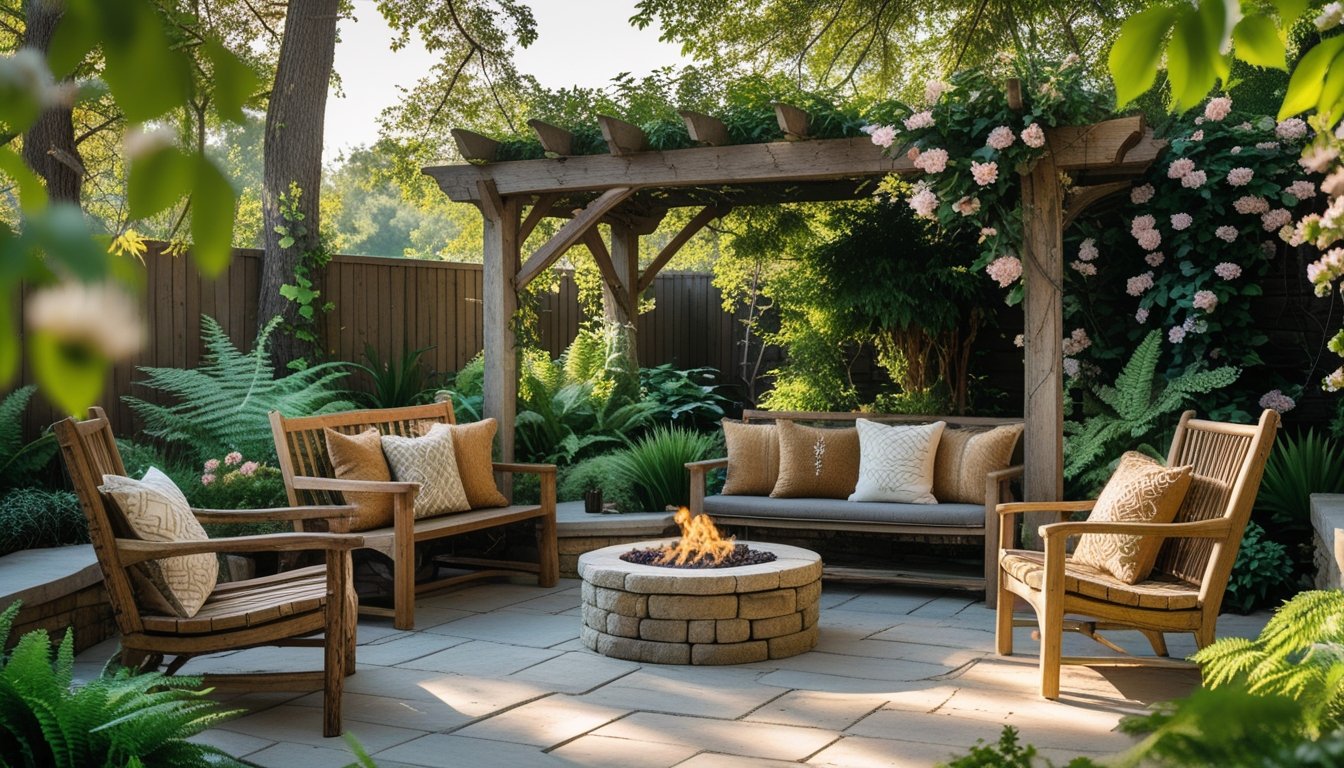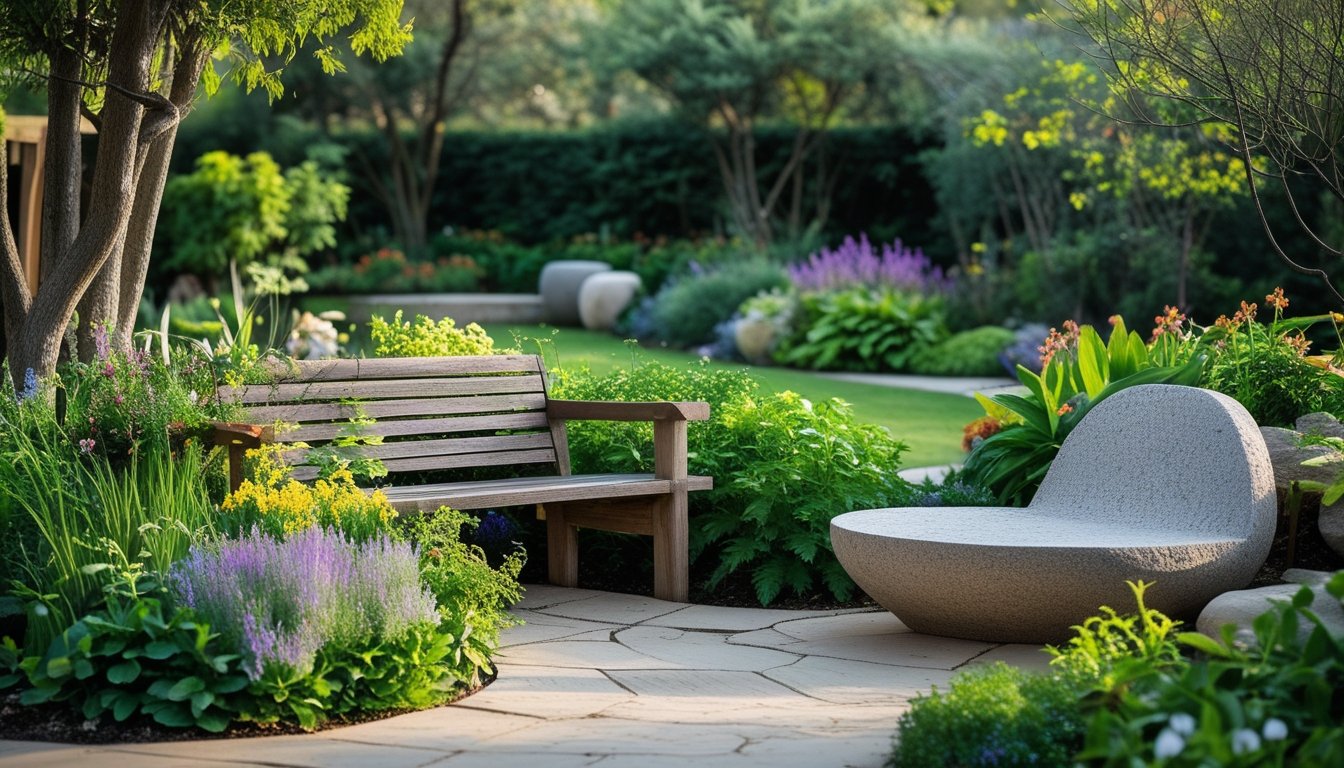Late updated: 10 Aug 2025 08:08
Written by: James Whitaker
Exploring Nature-Inspired Garden Seating Ideas: Creating Tranquil Outdoor Spaces
Nature has a unique way of inspiring the spaces we create, especially when it comes to gardens. There is something incredibly calming about a garden that seamlessly integrates natural elements. Incorporating nature-inspired seating into garden design not only enhances comfort but also adds a harmonious aesthetic. Whether we're placing rustic benches beneath a sprawling tree for dappled shade or integrating wicker chairs that blend with the rich colours of flower beds, the possibilities are endless.

A well-planned garden seating area can transform any outdoor space into a sanctuary. By using organic textures such as logs, boulders, or moss-covered stones along with carefully chosen plants, we can craft a distinct escape that encourages relaxation and mindfulness. Let's explore some innovative ideas that seamlessly marry these elements to create a personal retreat in our gardens.
Adopting nature-inspired seating concepts isn't merely about style; it's about creating an experience that speaks to the soul. When we arrange our outdoor spaces with care, considering both the visual and sensory aspects, we invite a sense of tranquillity and enjoyment into our daily lives.
Key Takeaways
- Nature-inspired seating enhances both comfort and aesthetics.
- Organic elements create relaxing garden spaces.
- Thoughtful design fosters tranquillity and enjoyment.
Essential Nature-Inspired Garden Seating Concepts

Incorporating nature-inspired elements into garden seating can transform any outdoor area into a tranquil retreat. By harmonising seating with the landscape, selecting natural materials, and designing intimate spaces, we can create an inviting environment that encourages relaxation and connection with nature.
Integrating Seating into the Landscape
When we integrate seating directly into the landscape, it creates a seamless connection with the natural surroundings. Built-in seating, such as benches constructed from stone or wood, can appear as an extension of the garden itself. This approach not only enhances aesthetic appeal but also utilises space efficiently.
Integrating seating with existing elements like trees or garden walls increases functionality without disturbing the environment. We can plant climbing plants nearby to intertwine with these structures, further reinforcing the bond between seating and landscape.
Choosing Natural Materials and Textures
Choosing materials that mimic nature’s textures creates a cohesive aesthetic. We should prioritise using wood, stone, or bamboo, which blend effortlessly into garden settings. These materials, besides being visually pleasing, are durable and suitable for outdoor conditions.
To amplify the natural feel, think about incorporating elements like potted plants or decorative stones near seating areas. Adding cushions or throws with earthy tones enhances comfort and ties different textures together, offering a holistic experience that aligns with the surrounding nature.
Maximising Small Spaces and Creating Garden Nooks
In smaller gardens, creating intimate garden nooks is key to maximising space. By strategically placing small benches or wicker chairs in corners or near walls, we create cosy areas without crowding the space. Even on a balcony, adding a compact seating arrangement with a small table can turn underutilised areas into charming retreats.
Utilising vertical space with hanging or climbing plants brings in greenery without sacrificing ground space. These nooks offer privacy yet feel connected to the garden, making them perfect for relaxation. By creatively using space while ensuring a natural blend with the environment, small gardens can offer serene seating solutions.
Designing Characterful Outdoor Retreats

Designing an outdoor retreat that brims with character involves blending natural features with thoughtful design elements. By incorporating water features, cosy seating, ambient lighting, and privacy solutions, we can create a serene escape that's both functional and beautiful.
Incorporating Water Features and Planters
Water features such as fountains and small ponds add tranquillity and a gentle soundscape to the garden. Their soothing effect can transform the atmosphere, making it more restful.
Planters filled with flowering vines or roses contribute bursts of colour and delicate fragrances. These plants can be strategically placed around water features or along pathways, creating a lush, inviting setting. By combining these elements, we can establish a harmonious environment that encourages relaxation and connection with nature.
Cosy Corners: Hammocks, Benches, and Swing Seats
Creating cosy corners is essential for a welcoming outdoor retreat. Hammocks and garden benches serve as ideal spots for lounging, daydreaming, or reading.
A wooden bench nestled among greenery offers a rustic charm. For a playful touch, swing seats can be added, evoking a sense of nostalgia. These seating options can be interspersed throughout the garden, allowing people to take in different views and enjoy their moments of solitude.
Atmosphere with Lighting and Textiles
Setting the right ambience requires careful consideration of lighting and textiles. Fairy lights and lanterns enhance the garden's charm after dusk, casting a soft and inviting glow.
Using an outdoor rug adds texture and warmth, defining the seating area and uniting the space. The choice of textiles, from cushions to throws, should be both durable and stylish, reflecting the aesthetic of our retreat while ensuring comfort and resilience against the elements.
Ensuring Comfort, Shade, and Privacy
Comfort is paramount in our outdoor retreat, which we achieve with strategic design choices. Umbrellas provide shade on sunny days, and pergolas topped with climbing plants offer additional shelter and a natural aesthetic.
A privacy screen composed of tall plants or latticework can create secluded areas without feeling constricting. By achieving the right balance between sun and shade and offering quiet nooks, we ensure our garden remains a private and comfortable haven, inviting us to unwind and enjoy the outdoors.
Frequently Asked Questions

In exploring nature-inspired garden seating ideas, we address effective incorporation of seating in small gardens, budget-conscious solutions, design principles, comfort aspects, suitable materials, and how to integrate seating into vegetable gardens. These key insights aim to enhance both aesthetics and functionality.
How can one incorporate seating into small garden designs effectively?
To maximise space in small gardens, consider multifunctional furniture like benches with storage. Vertical elements such as wall-attached chairs conserve horizontal space. Integrating seating into existing structures like retaining walls can also be a savvy approach.
What are some budget-friendly ideas for adding seating to a garden?
Repurposing materials can be cost-effective. Think pallets or reclaimed wood for DIY benches. Look for sales or second-hand shops for deals on outdoor furniture. Simple logs or stumps offer rustic charm at little to no cost.
What design principles should be considered when creating a seating area in a garden?
Consider balance and proportion to ensure harmony within the garden. Incorporate nature’s elements through the use of natural, earthy colours and textures. Positioning should focus on both function and aesthetics, respecting the flow of the garden.
How can one create a comfortable and inviting garden seating area?
Comfort can be enhanced by adding cushions and throws made from weather-resistant materials. Providing shade is essential, achieved through options like pergolas, umbrellas, or strategically planted trees. Arrange seating to encourage social interaction and relaxation.
What materials are best suited for outdoor garden seating in various climates?
Materials must withstand local weather conditions. Teak and eucalyptus are durable for wetter climates, while aluminium and synthetic wicker resist humid conditions. For areas with high sun exposure, UV-resistant finishes maintain material integrity.
How can vegetable gardens be designed to include functional and attractive seating?
Incorporate seating along pathways for convenience. Elevated beds can double as benches, providing access and rest. Using arbour benches creates an appealing focal point amidst the greenery. Integrating seating near productive areas encourages regular maintenance and enjoyment.
